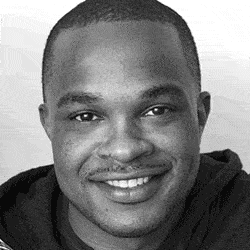The amazing variety of human faces – far greater than that of most other animals – is the result of evolutionary pressure to make each of us unique and easily recognizable, according to a new study by University of California, Berkeley, scientists.
Our highly visual social interactions are almost certainly the driver of this evolutionary trend, said behavioral ecologist Michael J. Sheehan, a postdoctoral fellow in UC Berkeley’s Museum of Vertebrate Zoology. Many animals use smell or vocalization to identify individuals, making distinctive facial features unimportant, especially for animals that roam after dark, he said. But humans are different.
“Humans are phenomenally good at recognizing faces; there is a part of the brain specialized for that,” Sheehan said. “Our study now shows that humans have been selected to be unique and easily recognizable. It is clearly beneficial for me to recognize others, but also beneficial for me to be recognizable. Otherwise, we would all look more similar.”
“The idea that social interaction may have facilitated or led to selection for us to be individually recognizable implies that human social structure has driven the evolution of how we look,” said coauthor Michael Nachman, a population geneticist, professor of integrative biology and director of the UC Berkeley Museum of Vertebrate Zoology.
The study will appear Sept. 16 in the online journal Nature Communications.
Facial traits
In the study, Sheehan said, “we asked, ‘Are traits such as distance between the eyes or width of the nose variable just by chance, or has there been evolutionary selection to be more variable than they would be otherwise; more distinctive and more unique?’”
As predicted, the researchers found that facial traits are much more variable than other bodily traits, such as the length of the hand, and that facial traits are independent of other facial traits, unlike most body measures. People with longer arms, for example, typically have longer legs, while people with wider noses or widely spaced eyes don’t have longer noses. Both findings suggest that facial variation has been enhanced through evolution.
Finally, they compared the genomes of people from around the world and found more genetic variation in the genomic regions that control facial characteristics than in other areas of the genome, a sign that variation is evolutionarily advantageous.
“All three predictions were met: facial traits are more variable and less correlated than other traits, and the genes that underlie them show higher levels of variation,” Nachman said. “Lots of regions of the genome contribute to facial features, so you would expect the genetic variation to be subtle, and it is. But it is consistent and statistically significant.”
Army data
Sheehan was able to assess human facial variability thanks to a U.S. Army database of body measurements compiled from male and female personnel in 1988. The Army Anthropometric Survey (ANSUR) data are used to design and size everything from uniforms and protective clothing to vehicles and workstations.
A statistical comparison of facial traits of European Americans and African Americans – forehead-chin distance, ear height, nose width and distance between pupils, for example – with other body traits – forearm length, height at waist, etc. – showed that facial traits are, on average, more varied than the others. The most variable traits are situated within the triangle of the eyes, mouth and nose.
Sheehan and Nachman also had access to data collected by the 1000 Genome project, which has sequenced more than 1,000 human genomes since 2008 and catalogued nearly 40 million genetic variations among humans worldwide. Looking at regions of the human genome that have been identified as determining the shape of the face, they found a much higher number of variants than for traits, such as height, not involving the face.
Prehistoric origins
“Genetic variation tends to be weeded out by natural selection in the case of traits that are essential to survival,” Nachman said. “Here it is the opposite; selection is maintaining variation. All of this is consistent with the idea that there has been selection for variation to facilitate recognition of individuals.”
They also compared the human genomes with recently sequenced genomes of Neanderthals and Denisovans and found similar genetic variation, which indicates that the facial variation in modern humans must have originated prior to the split between these different lineages.
“Clearly, we recognize people by many traits – for example their height or their gait – but our findings argue that the face is the predominant way we recognize people,” Sheehan said.
Sheehan’s work was supported by a National Institutes of Health postdoctoral fellowship.
If our reporting has informed or inspired you, please consider making a donation. Every contribution, no matter the size, empowers us to continue delivering accurate, engaging, and trustworthy science and medical news. Independent journalism requires time, effort, and resources—your support ensures we can keep uncovering the stories that matter most to you.
Join us in making knowledge accessible and impactful. Thank you for standing with us!

